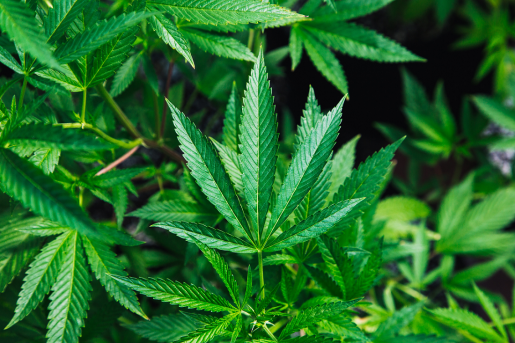Medical marijuana: Getting into the weed(s)
Marijuana, also known as cannabis, is made of the dried leaves, buds, flowers, and other parts from plants in the cannabis or hemp family. There are hundreds of chemicals in marijuana, but the two that we mostly talk about in medicine are tetrahydrocannabinol (THC) and cannabidiol (CBD).
While both have medicinal properties, THC is the one that makes people feel “high,” and CBD does not have that effect.
Before the Prohibition era in the 1930s, marijuana was popular as a medicine, especially for stomach problems. After Prohibition, though, it became illegal until the 1990s, when some states began to pass laws allowing its use. Currently, more than 30 states allow “medical marijuana.”
However, under federal law, marijuana is still classified as a schedule I drug – the same as heroin. Because of this, it has been hard for doctors and scientists to study marijuana, so we don’t know as much about it as we would like.
We do know that THC and CBD have been shown to work for certain conditions. THC is FDA approved to treat nausea and vomiting from chemotherapy, as well as appetite and weight loss in people with HIV. CBD is approved for the treatment of several types of epilepsy.
In other countries, a mixture of THC and CBD is also approved to treat muscle spasms from multiple sclerosis. Some people think that THC or CBD might help patients with chronic pain, appetite and weight loss from cancer, post-traumatic stress disorder, and glaucoma; but studies have not yet proven this.
When young people use whole marijuana heavily, it can cause problems with memory and learning. We don’t know for sure if these problems are permanent or go away if marijuana use is stopped.
Long-term use of marijuana has been associated with mental illness symptoms like hallucinations or paranoia, and schizophrenia might get worse with marijuana use. However, no one knows if marijuana directly causes these problems.
There is also concern that marijuana might be a “gateway drug.” In other words, young people who start using marijuana are more likely to use other drugs as well. Some scientists report that the opioid epidemic is worse in states where marijuana use is legal. Others, however, report that the availability of medical marijuana decreases the amount of opioid prescriptions.
Laws regarding marijuana in Texas are changing fast. The federal Farm Bill in 2018 made it legal to grow hemp for the first time since Prohibition. However, the plants must produce mostly CBD and only a very low amount of THC. In 2019, Texas also made it legal to grow low-THC hemp, but the rules for this will not be in place until sometime in 2020.
Meanwhile, medical use of CBD in Texas is permitted (with a prescription from a specialist) for epilepsy, multiple sclerosis, spasticity, autism, terminal cancer, and incurable neurodegenerative diseases. Confusingly, the Food and Drug Administration still says that CBD cannot be sold as a health product or food.
As medical marijuana grows, we will likely see more changes to policies that regulate its use, as well as more research to answer current questions about its safety and effectiveness for a range of health conditions.
-By Dr. Stacey Berg, associate dean for research assurances and professor of pediatrics and medical ethics and health policy at Baylor College of Medicine. Dr. Berg is also director of the developmental therapeutics program at Texas Children’s Cancer Center.




